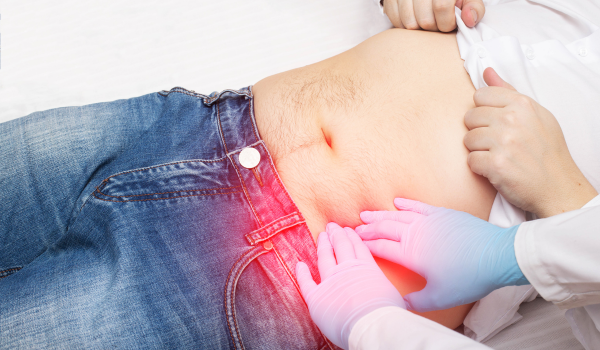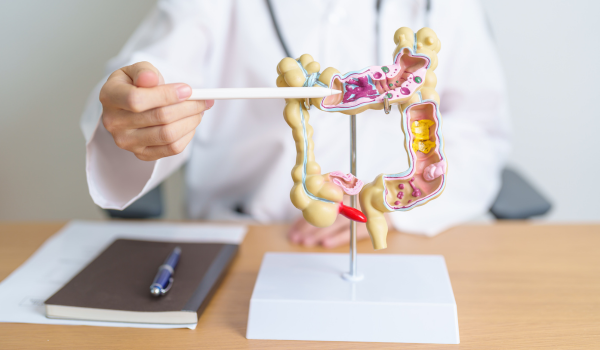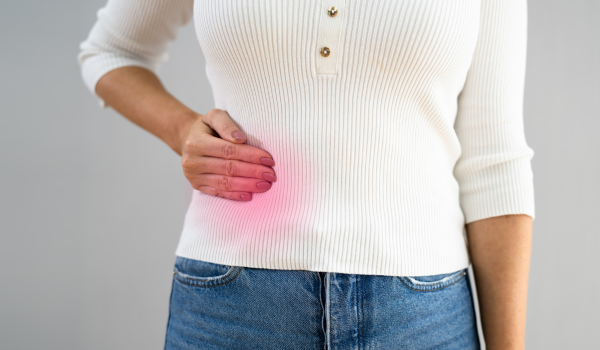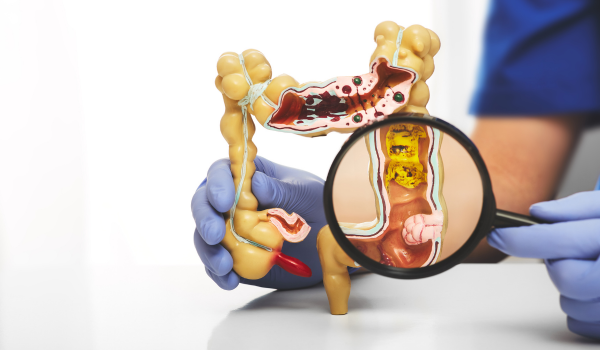Diverticulitis is a digestive condition that occurs when small pouches (diverticula) on the lining of the intestines become inflamed or infected. These pouches usually form in the colon, and when inflammation occurs, it can lead to significant discomfort, especially pain near the lower abdomen. People with diverticulitis often experience symptoms such as fever, nausea, and abdominal tenderness.
The condition is becoming more common, especially among older adults. Understanding the symptoms, recognizing when to seek medical help, and knowing your treatment options can make a big difference in managing and recovering from this condition.
Types of Diverticulitis
There are two main classifications of diverticulitis based on the severity and progression of the condition: uncomplicated and complicated diverticulitis.
uncomplicated diverticulitis
This type involves inflammation in the diverticula without further complications. There is no presence of pus, abscesses, or perforations. It’s typically managed at home with rest and may not require hospitalization.
complicated diverticulitis
This form is more severe and may involve the development of abscesses, small holes (perforations) in the colon wall, or the spread of infection to nearby tissues. In some cases, it can also lead to obstructions or blockages in the intestines and may cause inflammation of the abdominal lining, known as peritonitis.
Symptoms
Diverticulosis, which is the formation of diverticula, often does not cause noticeable symptoms. However, some people may experience bloating, cramping, or constipation.
When diverticulitis develops, symptoms tend to appear suddenly and can worsen over time. The most common symptom is sharp pain on the lower left side of the abdomen.
other common symptoms may include:
-
Fever and chills
-
Nausea
-
Bloating and abdominal swelling
-
Lower abdominal tenderness
-
Constipation or diarrhea
-
Changes in urinary patterns
Repeated episodes of diverticulitis often present with similar symptoms each time.
Causes
Diverticulitis occurs when diverticula become inflamed, often due to a minor tear or hole that allows bacteria from the colon to leak into surrounding tissues. This bacterial leakage triggers the immune system’s inflammatory response, leading to symptoms like pain, swelling, and fever.
underlying reasons may include:
-
Perforations in the diverticula (micro or macro tears)
-
Bacterial infection in or around the pouches
-
Immune response causing inflammation in the colon walls
The exact cause is still not fully understood, and symptoms can vary widely from person to person.
Risk Factors
While diverticulitis can affect anyone, certain factors increase the likelihood of developing it.
key risk factors include:
-
Smoking
-
Being overweight or obese
-
Lack of physical activity
-
Changes in gut microbiota
-
Use of medications such as NSAIDs and steroids
These factors may contribute to inflammation or weaken the intestinal lining, making it more susceptible to infection.
Diagnosis
Diagnosing diverticulitis can be challenging because its symptoms often resemble those of other digestive issues, such as appendicitis. If you’re experiencing persistent abdominal pain, it’s crucial to see a healthcare provider.
your doctor may perform:
-
A detailed medical history and symptom review
-
A physical exam focusing on abdominal pain
-
Imaging tests to confirm the diagnosis and severity
common diagnostic tests include:
-
CT scan: Offers detailed images to locate inflammation or abscesses
-
Ultrasound: Non-invasive imaging using sound waves
-
Colonoscopy: Visual inspection of the colon with a camera
-
X-ray: Helps detect blockages or other complications
-
Blood tests: To identify infection or inflammation
-
Pregnancy test: To rule out pregnancy as a cause of abdominal pain
Imaging tests are typically the most accurate tools for diagnosing diverticulitis.
Treatment
Treatment aims to relieve symptoms, treat any infection, and prevent further episodes. The approach depends on whether the condition is uncomplicated or complicated.
common treatment options include:
-
Antibiotics: Used when infection is present or in cases of complicated diverticulitis, especially for people with weakened immune systems
-
Rest and dietary adjustments: Mild cases may improve with rest, fluids, and a low-fiber diet during recovery
-
Percutaneous drainage: Drains abscesses using a needle guided by imaging
-
Surgery: In severe cases, part of the colon may be removed to prevent recurrence or manage complications
Prevention of Recurring Episodes
Preventing diverticulitis is key after experiencing an initial episode. While research is ongoing, several lifestyle changes are thought to reduce the risk of recurrence.
preventive strategies may include:
-
Engaging in moderate physical activity regularly
-
Avoiding smoking
-
Limiting intake of red meat
-
Increasing dietary fiber (fruits, vegetables, whole grains)
-
Only taking NSAIDs or similar medications under medical supervision
These changes help improve digestive health and reduce strain on the colon.
Complications
Around 20% of those with diverticulitis may experience complications, especially if the condition becomes severe or recurs frequently.
potential complications include:
-
Formation of abscesses
-
Intestinal blockages
-
Fistulas between the intestine and other organs
-
Perforations in the intestinal wall
These complications may require advanced medical treatment, including surgery.
Living with Diverticulitis
Ongoing management is essential for people who have had diverticulitis. About one-third of patients may have repeated episodes, which are more likely in older adults.
The condition can affect daily life, making it important to monitor symptoms and get timely treatment. If pain or digestive issues interfere with your routine, consult your doctor to explore treatment and management options.
Quick Summary
Diverticulitis is a condition marked by inflammation in small pouches of the colon wall. It can lead to sudden abdominal pain, fever, nausea, and bowel movement changes.
Mild (uncomplicated) cases can often be managed at home, while more severe (complicated) cases may require antibiotics or surgery. Lifestyle changes such as increasing fiber intake and avoiding smoking may help prevent future episodes.
If you experience symptoms, seek medical care to confirm the diagnosis and receive the appropriate treatment.






